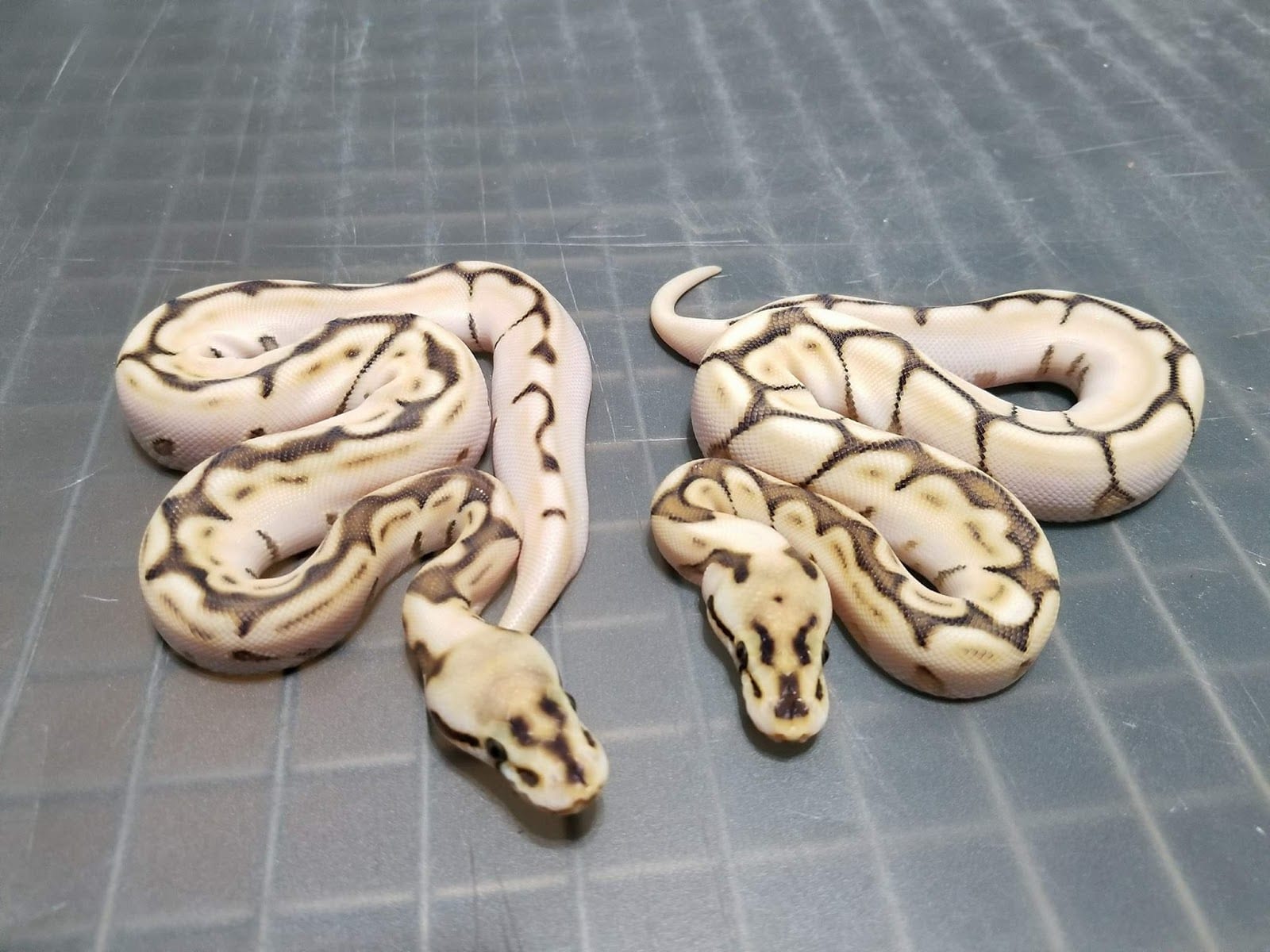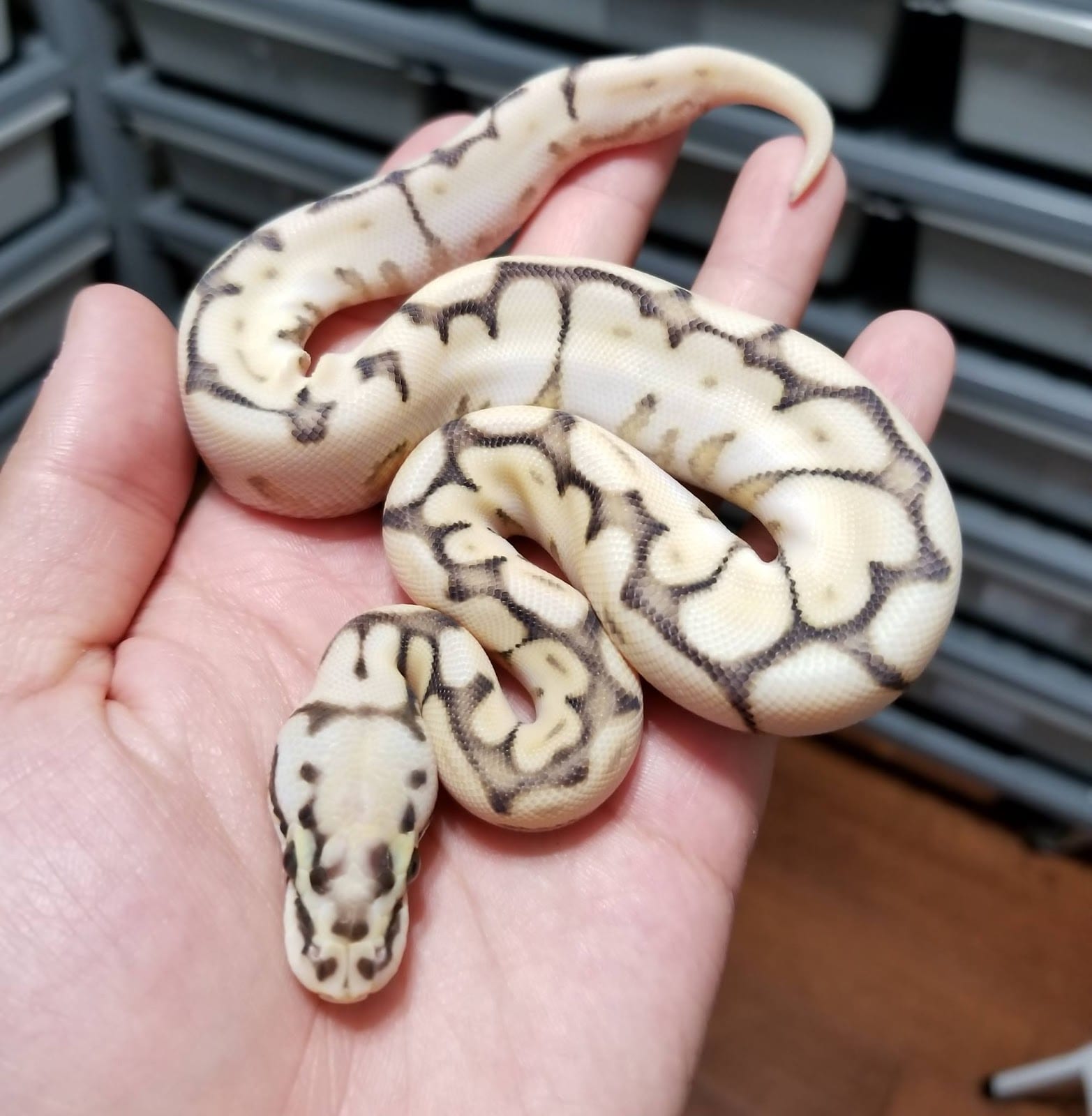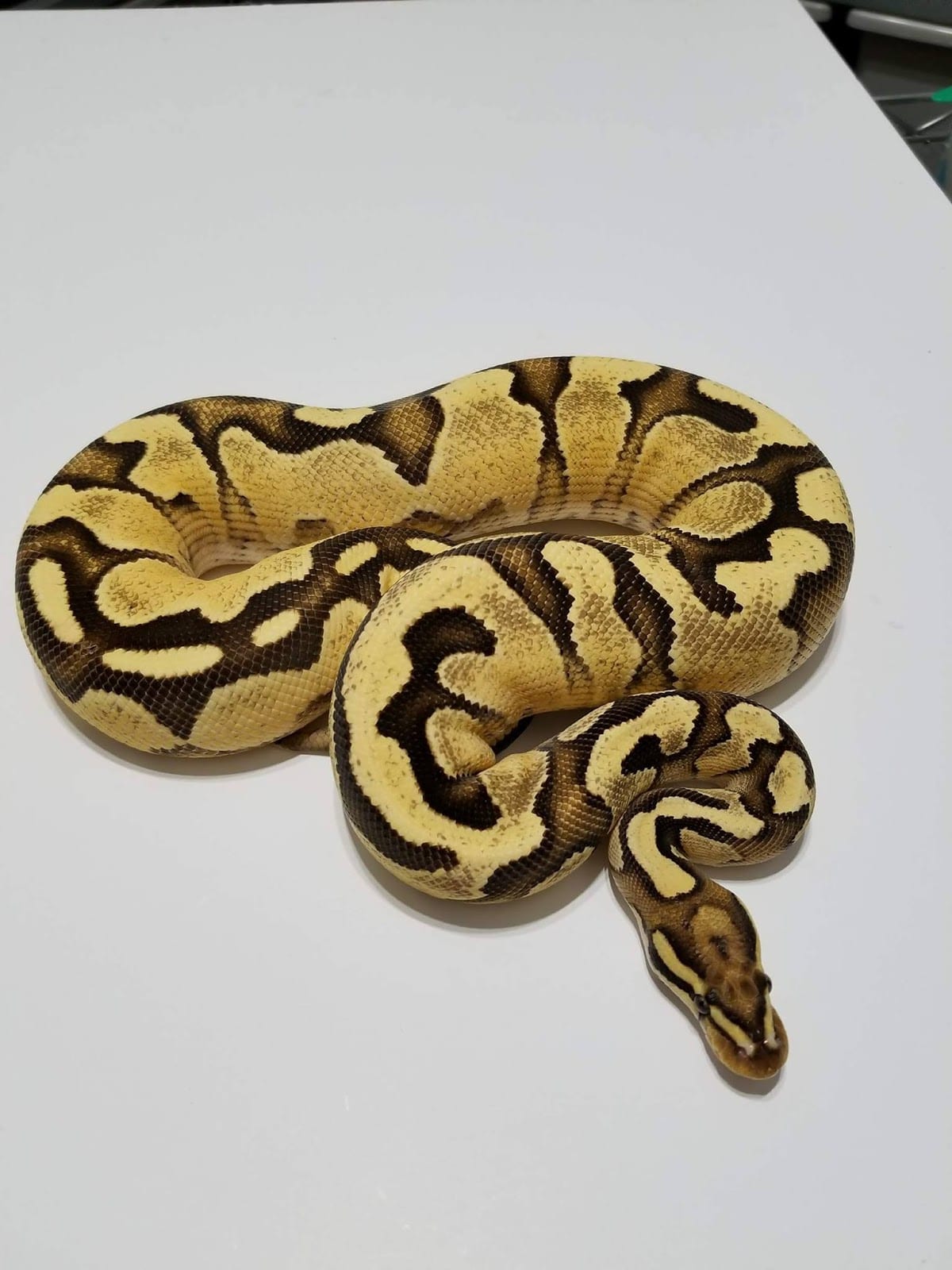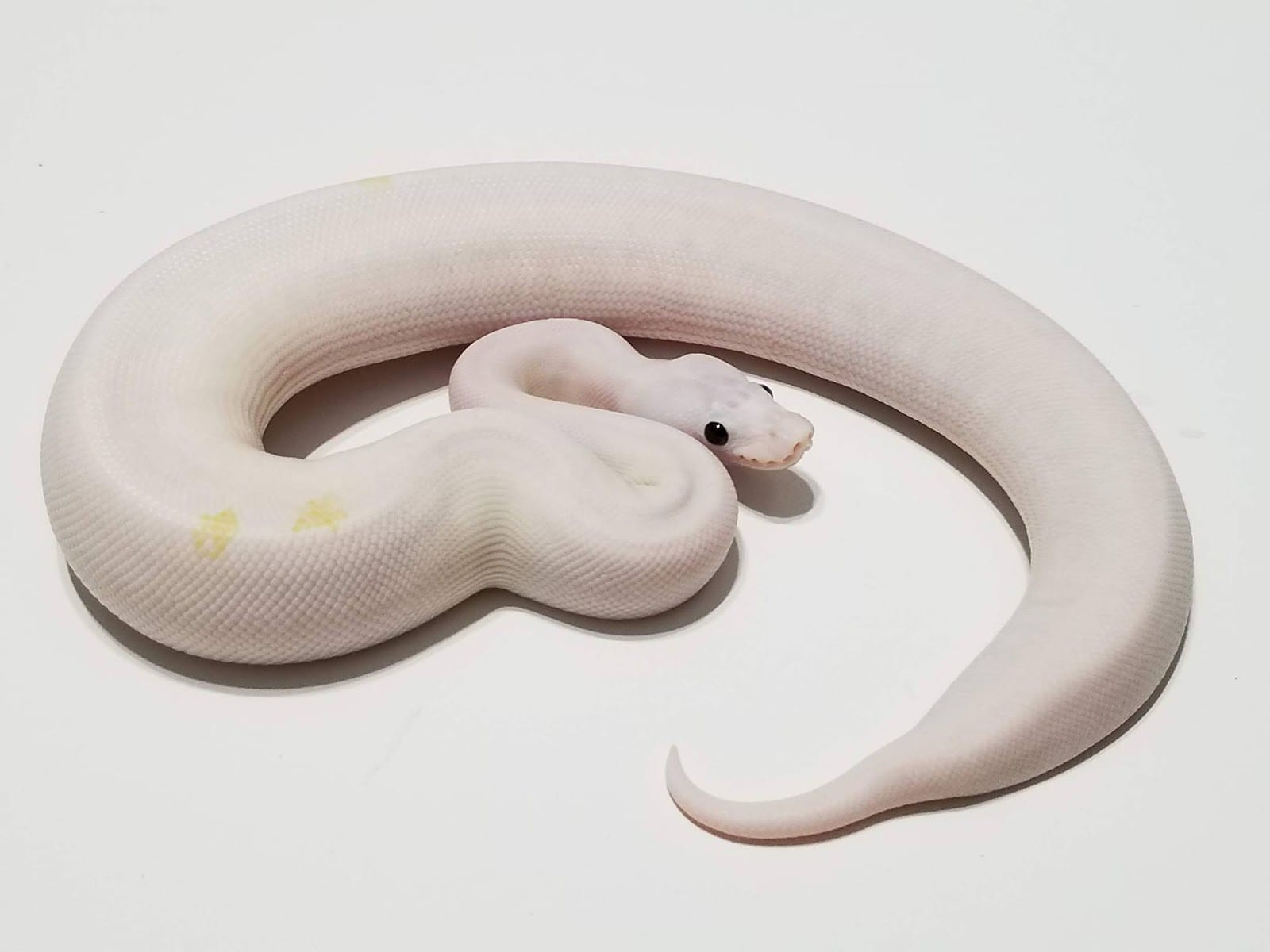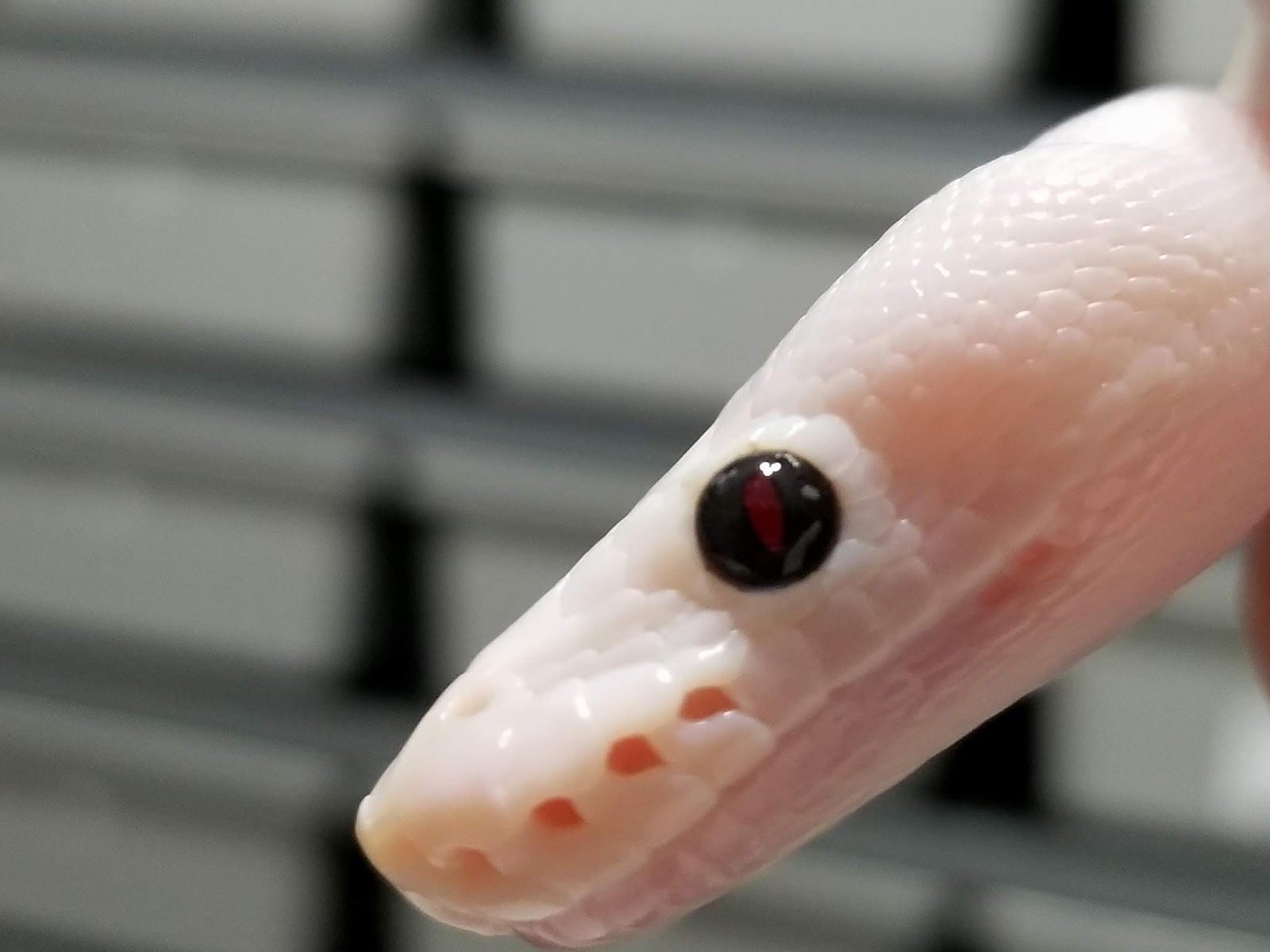Jeez, he sure was beautiful. Our new snake, that is, before it escaped into the car in a mysterious, Houdini-like fashion. I left my family in the car with the snake while on my way into the store to purchase a new home for it. By the time I got back, 15 minutes later, everyone was in crisis mode. One minute, the snake was contained in the passenger's seat of the car, with all the doors and windows closed, and the next minute he was nowhere to be found. It has now been 17 hours since our snake went AWOL, and still there is no sign of him anywhere. The snake has ghosted on us. When we find him, we are going to name that little bugger ‘Casper.'
We bought our new ball python at a reptile show nearby called Repticon. At this type of event, reptile lovers from across the country gather to show off and sell their snakes, lizards, turtles, frogs, axolotls, even spiders and scorpions. We singled out Casper to be the new addition to our family because of his unique scale pattern and breeding potential. We even got him a female snake, but Casper doesn't seem very grateful to us for our interest in his love life, considering how fast he dipped out.
Left: Bob's Balls booth at Repticon and right: Casper's new mate, a leopard calico pastel.
When you buy a snake at Repticon, they give it to you in a breathable, canvas bag with a drawstring on it. Apparently, when you don't tie a knot tight enough and you have happened to purchase a ball python with an intelligence level seemingly greater than that of most humans, the snake finds a way out. Mind you, according to my loved ones, there was a 5 minute time period in which the snake escaped into oblivion. That takes talent.
We looked for Casper everywhere. In fact, we are still looking, and we are sure there is no way he could have escaped from the car into the outside world. After he got loose, we dismantled the entire vehicle. And when I say dismantled, I mean it. We removed the seats, the center console, the air vents. We tore out the carpet, we checked the frame of the car, we opened the seat cushions, even checked the engine and the lining in the ceiling. No cigar. This whole debacle has been emotionally exhausting. Everyone was (and still is) a mess.
Someone was watching the car the entire time during our investigation to ensure that Casper didn't fall out and slither off while our backs were turned. So that leaves only one place left that he could be – the dashboard. That freaking thing climbed into the most expensive part of the cab to remove.
So, at this point in time (after 17 hours of stressful searching), my partner and his very helpful friend are putting the seats back into the vehicle so we can take it to a shop to have the dashboard removed. We are gonna save this snake. And while he does that, I am going to spit you some science.
Now that you have the lowdown, here's why this snake is not just a regular ball python:
Casper, as I am going to refer to him (yes it is a ‘he'), is an Orange Dream Spider Yellow Belly ball python. Before you start wondering what the heck that means, here is a picture of him. Isn't he pretty?

The terms “Orange Dream,†“Spider,†and “Yellow Belly,†however comical they may seem, actually refer to the presence of separate genetic mutations in this animal.
A genetic mutation occurs when a gene has been randomly altered in such a way that the gene is now abnormal. Genes come in pairs, one from each parent, and most genes do have variant or mutated forms. These variants of a gene are called alleles. Mutations can lead to new alleles, and those new alleles can produce interesting phenotypes (simply another word for the snake's visual appearance due to its genetics).
These mutations are largely selected by humans through the breeding process, but some simple morphs are present in the wild. A morph just refers to any ball python with some form of genetic variation going on. Here is an example: compare Casper – a “three gene morph†(Orange Dream, Spider, and Yellow Belly), as he would be referred to in the reptile community – to a normal Ball Python with no mutations.
See the difference?
Each of the three genes in Casper affects his pattern in a different way. The Orange Dream mutation really just produces more orange coloration on the snake as well as a very banded pattern – when I say banded pattern, I am referring to the dark markings on the snake looking more like bands around the body than random blobs.
The Spider mutation reduces the pattern, making the dark markings very thin. It is called spider as in ‘spider webbed,' referring to the resulting shape of the pattern. This mutation also creates a very pixelated effect as the pattern blends into the belly of the snake, which is usually white (with some speckled scales occasionally) on normal ball pythons.

The Yellow Belly in Casper produces a rich color on the snake, and also causes the edges of the belly to have a bit of a checkered or flamed pattern. The pattern goes further into the bottom of the snake for a Yellow Belly ball python, unlike a non-mutated “wild-type†ball python, which is typically referred to by the reptile community as a “normal.â€
All three of these genes work together to create a very unique look for Casper, the friendly snake. And of course each mutation can be expressed to varying degrees, so another Orange Dream Spider Yellow Belly may look fairly different from the creature in question. If you want to know more about some of the basic morphs, check out this page.
There are thousands of morphs of ball pythons, formed from different combinations of individual mutations. Yes, all of them sound just as goofy as Orange Dream Spider Yellow Belly (my favorite has got to be the Apocalypse ball python, a.k.a the Yellow Belly Pastel Coral Glow Granite Hidden Gene Woma Mocha ball python).
People are discovering new morphs all the time. When I say that people discover mutations, I simply mean that they spot them visually or breed together snakes with certain genes that give birth to new genetic combinations (check out this morph calculator to see the possibilities). Typically when a new basic morph is identified, someone has purchased a “normal†ball python and they notice some strange pattern or coloration on it. Although they may suspect they have a new mutation in their hands, they won't be able to tell until they breed it. If they breed it and the babies look just like the parent, chances are they have a new dominant morph!
More morph examples! Courtesy of Bob's Balls. Left: Orange Dream Lesser Spider Yellow Belly babies after first shed.
Right: Orange Dream Queen Bee Yellow Belly after first shed. To see what these names mean click here.
The moment I first walked into Repticon, the reptile show that I spoke of at the beginning, I honestly thought, “What the h*** is this?†People were walking around talking about their Fire Leopard Mojave Pastel ball pythons and I was walking around asking myself what choices I had made in my life that would have landed me in such a place. And then, of course, I became one of those people. I came to find out that this whole craze started in 1992 when the first Albino ball pythons were born in captivity from two supposedly normal ball pythons and sold for $7,500. (If you think that's expensive, check these guys out). The community recognized they had a recessive gene on their hands and wondered what other recessive, dominant, or incomplete dominant genes could be present in these animals. Then the breeding world of ball pythons exploded.
Left: Another booth at Repticon. Right: Me with a 6 foot reticulated python on my head. I had to be talked out of bringing him home. This is honestly one of the happiest moments of my life – I had an emotional bond with that snake. Too bad he will eventually be big enough to eat my cats.
Before I return to Casper's story, I want to take a second to mention a couple cool things about ball python genetics, specifically the “super form.†To explain what this means, we have to explore some genetic terms:
Incomplete dominant genes are dominant meaning that only one set of chromosomes has to have the mutation present for it to show up in the animal. If the snake has only one copy of the mutated gene, it is heterozygous for that gene. The snake below is heterozygous for the Fire mutation. Fire (as well as Yellow Belly, which we mentioned above) is an example of an incomplete dominant gene. Even though the snake only has one copy of the Fire allele, its phenotype has been affected.
A Fire combo, courtesy of Bob's Balls. The snake above is heterozygous for the fire gene but likely has another mutation present that makes it a little lighter in color. Note the normal, greenish eyes and black pupil that this snake has.
Now, here's the kicker: since Fire is incomplete dominant, if the snake has a copy of the Fire allele on both chromosomes, (that is, it is homozygous for Fire), the snake will look something like this little beauty below:
Courtesy of Bob's Balls, a Super Fire ball python. Check out those eyes!
Crazy, right? This “Super Fire†snake, meaning it is homozygous for the incomplete dominant Fire allele, looks entirely different from the heterozygous Fire snake. That is what incomplete dominant genes do: they make the homozygous form, or “super form,†look much more intense than the heterozygous form. These “super forms†often create almost patternless snakes with striking eyes, like this Super Fire boasting dark eyes with red pupils. Another “super form†is the Blue Eyed Leucistic, or “Blue Eyed Lucy†for short, which is an all white snake with crystal blue eyes.
Even our familiar Orange Dream has a super form too:
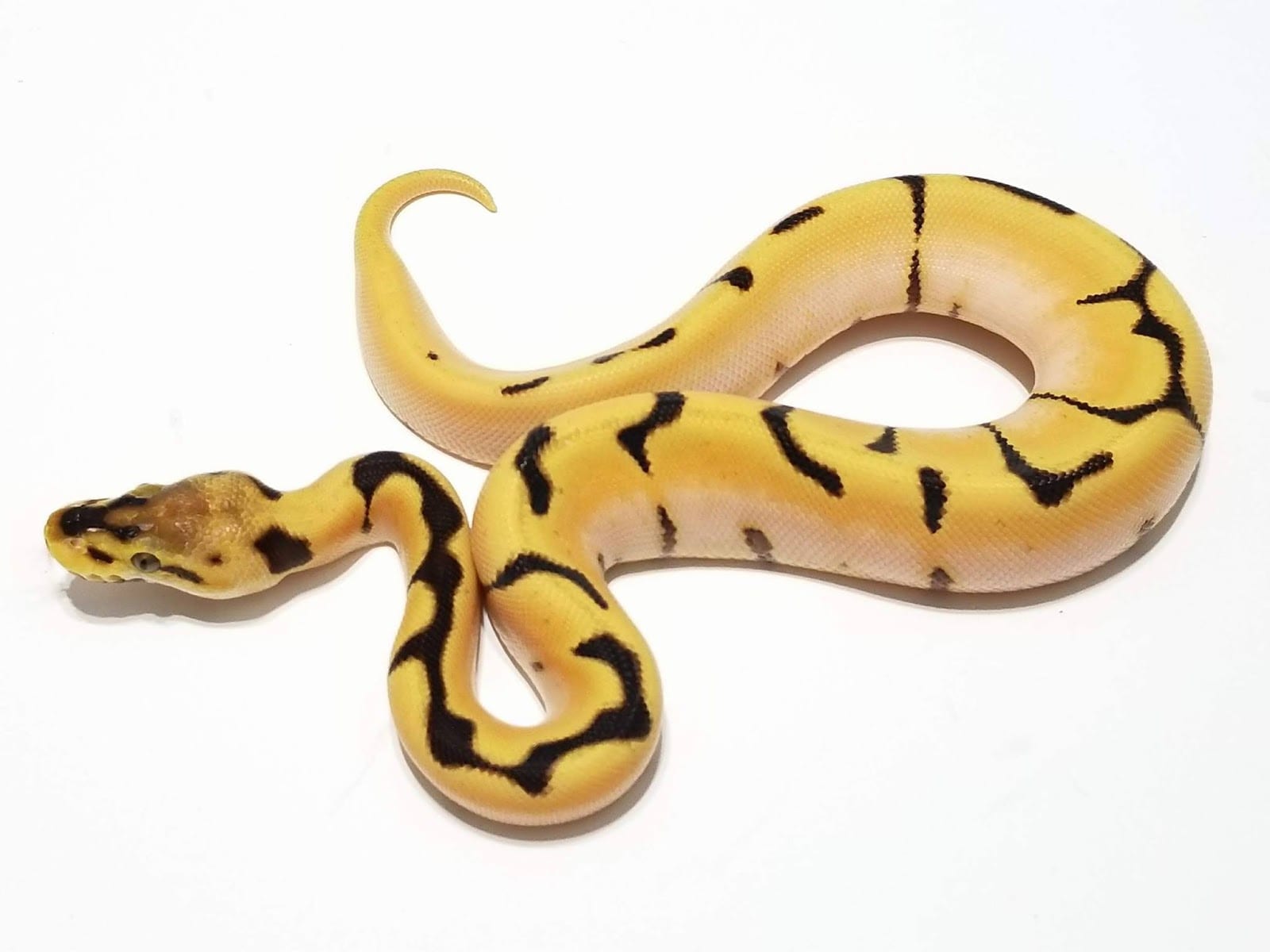
Although all-white snakes and bright yellow hatchlings may have been enough to shock you, I will leave you with one last surprise: the Storm Trooper ball python. Enough Said.
Back to the Story
In the time that it took me to finish writing this blog and help deal with a missing two foot ball python, Casper has been found, alive and well! Turns out that little trickster was in the dashboard the whole time, stuck there for a full 24 hours. Snakes always seek out heat (they are cold-blooded), so it makes sense that he went toward the front of the car.
After the mechanics removed a few parts, we got word that the snake had been spotted alive. But at that point, no one could get to him. He was way up in there, chillin' right under the windshield. (Ok, so he wasn't really chillin' – he did strike at the mechanics a few times). The entire dashboard had to be removed so that Casper could be safely reached without causing any harm to him. After more dismantling, Casper had enough room to move around. As the guys at the body shop coaxed him out, my partner in crime waited until the snake was entirely loose and was able to grab him as he slithered across what was left of the dash.
Casper, before, during, and right after rescue from the innards of a Dodge Ram.
At the end of the day, regardless of the money it cost, the time, and the stress, we are just glad that Casper is alright. Needless to say it was emotional, in the best way, when we got the initial call that the snake was safe. He has only a couple of very minor scratches on his body from moving around in the guts of the car. All of this was worth it to save this beautiful creature.
Before we leave this exciting world of reptiles and this absolutely crazy story, I think a couple of shoutouts are in order. A HUGE thanks to Classic Design & Fabrication, who removed the dashboard and kept our snake safe and sound. The owner, Rich, was so fantastic in handling this situation in a time sensitive manner and doing everything that he could to make sure Casper wasn't injured in the rescue process. Granted he wouldn't hold the snake once it was free, even after endless peer pressuring, but he did pet it!
A special thanks to Bob Vu of Bob's Balls (fantastic name, right?). He is the one that bred and raised our new beautiful and healthy ball pythons, which we purchased from him at Repticon. Many of the photos in this blog are of his snakes and he was nice enough to provide them for use here. He didn't even get mad when I told him this story; instead, he gave caretaking pointers.
A final shoutout to my amazing partner, John, who never ceases to amaze me with his love for all life-forms. This man won't even kill a centipede in the house (much to my dismay). It was truly incredible to watch him tear his own vehicle to pieces to save a snake. His compassion and determination not only brought home Casper unscathed, but continue to inspire me every day. In conclusion, we are just glad this story had a happy ending.

About the author:
 |
Lauren Sgro is a PhD student in the Physics department at the University of Georgia. Her research focus is in astronomy, specifically debris disks around young stars that may tell us more about planetary formation. Despite the all-consuming nature of graduate school, she enjoys doing yoga and occasionally hiking up a mountain. You can't reach her on Twitter, but you can email her at lauren.sgro25@uga.edu. More from Lauren Sgro. |
About the Author
- athenssciencecafehttps://athensscienceobserver.com/author/athenssciencecafe/April 17, 2020
- athenssciencecafehttps://athensscienceobserver.com/author/athenssciencecafe/April 12, 2020
- athenssciencecafehttps://athensscienceobserver.com/author/athenssciencecafe/April 3, 2020
- athenssciencecafehttps://athensscienceobserver.com/author/athenssciencecafe/March 30, 2020



